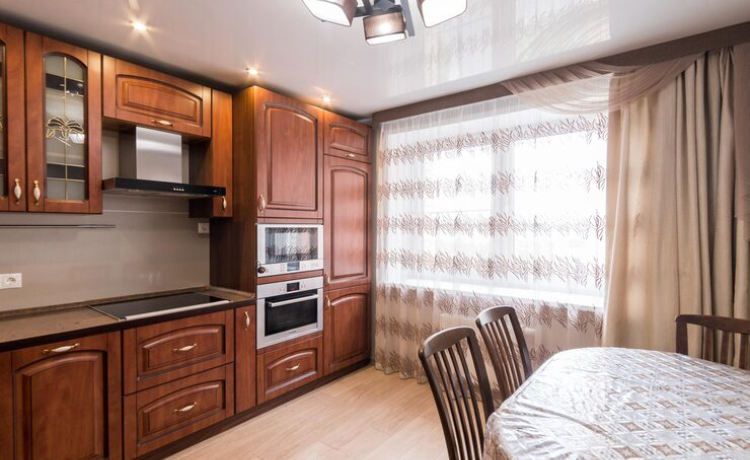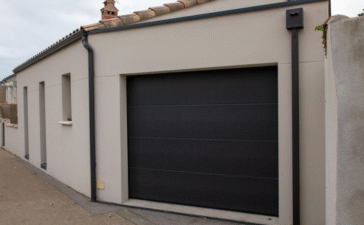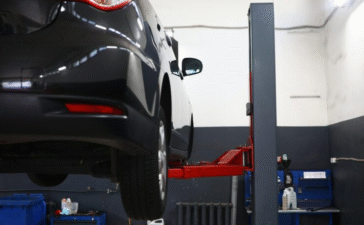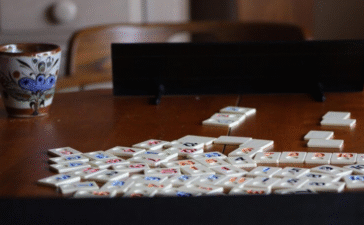A kitchen remodel is a significant investment, and choosing the right cabinetry is one of the most crucial decisions you’ll make. The cabinets define the room’s style, functionality, and overall feel. While trends come and go, some materials stand the test of time, offering a blend of beauty and durability that few others can match. Cherry wood is one of those classic choices. For generations, homeowners and designers have turned to cherry for its warmth, strength, and sophisticated appeal. This guide will walk you through everything you need to know about cherry kitchen cabinets. We’ll explore why they remain a popular choice, compare them to other wood types, and offer guidance on styles, finishes, and maintenance. By the end, you’ll have a clear understanding of whether cherry cabinets are the perfect fit for your dream kitchen.
What Are Cherry Kitchen Cabinets?
Cherry kitchen cabinets are crafted from the wood of the cherry tree, most commonly the American Black Cherry. This hardwood is renowned for its smooth, close-grained texture and its stunning, warm reddish-brown hue. When first cut, cherry wood often has a lighter, pinkish tone, but it deepens and darkens over time with exposure to light, developing a rich, sought-after patina.
The reason cherry cabinets have remained a staple in kitchen design is their unique combination of elegance and resilience. The wood’s fine grain allows for a smooth, luxurious finish, while its inherent strength ensures it can withstand the daily rigors of a busy kitchen. This blend of form and function makes it a premium choice for those looking to create a lasting and beautiful space.
Why Choose Cherry Kitchen Cabinets?
The advantages of selecting cherry wood for your kitchen are numerous. Its durability is a primary selling point. As a hardwood, cherry is resistant to dents, scratches, and warping, ensuring your cabinets will maintain their structural integrity for decades. This longevity makes it a wise long-term investment for your home.
Aesthetically, cherry wood is hard to beat. Its rich, warm colors add a sense of luxury and comfort to any kitchen. The grain is typically subtle and uniform, featuring elegant swirls and a smooth texture that accepts stains and finishes beautifully. One of the most cherished characteristics of cherry wood is the way it ages. Unlike other materials that may fade or deteriorate, cherry cabinets develop a deeper, more complex color over time, a process that adds character and depth to your kitchen.
When compared to other popular woods like oak or maple, cherry holds a unique position. Oak has a more prominent, open grain, which lends itself to rustic or traditional styles but can feel busy in a modern setting. Maple has a fine, light-colored grain, offering a brighter look, but it lacks the warmth and rich aging process of cherry. Cherry wood strikes a perfect balance, providing a sophisticated grain pattern and a warm color that can adapt to various design aesthetics.
Cherry Kitchen Cabinet Styles and Designs
It allows it to be crafted into a wide range of cabinet styles, fitting seamlessly into both modern and traditional kitchens.
Modern Cherry Kitchen Cabinets
In a modern kitchen, cherry cabinets can provide a touch of organic warmth to an otherwise sleek and minimalist design. Opt for flat-panel or slab doors to create clean, uninterrupted lines. Paired with minimalist hardware, quartz countertops, and a simple backsplash, modern cherry cabinets feel sophisticated and inviting, not dated. The rich wood tone can be used to ground a space with lighter elements, preventing it from feeling cold or sterile.
Traditional Cherry Kitchen Cabinets
For a traditional look, cherry wood is a natural fit. Its inherent elegance complements classic design elements like intricate moldings, raised panels, and detailed craftsmanship. In a rustic or country-style kitchen, cherry cabinets with a warm, medium stain can create a cozy and welcoming atmosphere. Paired with natural stone countertops and vintage-inspired hardware, they evoke a sense of timeless comfort and charm.
Popular Cherry Cabinet Styles
Several cabinet door styles are particularly well-suited for cherry wood. Shaker-style cabinets, with their simple frame and recessed center panel, are a transitional choice that works in almost any kitchen. In cherry, they feel both classic and current. Raised-panel cabinets feature a central panel that is elevated, adding dimension and a formal, traditional look. Flat-panel cabinets, as mentioned, are perfect for modern and contemporary spaces, highlighting the wood’s natural grain and color without extra ornamentation.
Choosing the Right Cherry Wood for Your Kitchen Cabinets
Not all cherry wood is the same. The type of wood and its grade will impact the look and cost of your cabinets. The two main varieties are American and European cherry. American Cherry is the standard for high-quality cabinetry in the United States, known for its consistent reddish-brown color and smooth grain. European Cherry tends to be slightly lighter and can have more color variation.
When selecting your cabinets, you’ll also encounter different grades of wood. Premium grades will have a more uniform color and fewer natural characteristics like knots or mineral streaks, while standard or “rustic” grades will embrace these variations for a more natural look. Your choice will depend on your budget and aesthetic preference. If you desire a sleek, uniform appearance, a premium grade is worth the investment. If you prefer a more organic or rustic style, a standard grade can add character and save you money.
Cherry Kitchen Cabinet Finishes and Colors
The finish you choose for your cherry cabinets will have a significant impact on their final appearance. Staining can enhance the wood’s natural beauty or alter its color to fit your design scheme. A light stain will preserve the natural, lighter tones of new cherry wood, while a medium stain can bring out its warm undertones. A dark stain will create a dramatic, luxurious look, perfect for a formal or traditional kitchen.
You can also choose from various finish sheens, such as matte, satin, or glossy. A matte finish offers a soft, natural look, while a glossy finish provides a sleek, modern, and light-reflecting surface. A satin finish is the most popular choice, offering a subtle sheen that is both durable and easy to clean.
When matching cherry cabinets with other kitchen elements, aim for balance. Light-colored countertops made of quartz, granite, or marble can create a beautiful contrast with medium or dark cherry cabinets. For flooring, hardwood floors in a lighter or contrasting tone work well, as do neutral-colored tiles. Your backsplash is an opportunity to add personality, whether you choose a classic subway tile or a more intricate mosaic.
Cost of Cherry Kitchen Cabinets
Cherry cabinets are considered a premium option, and their price reflects their quality and durability. The cost is influenced by several factors, including the grade of the wood, the style of the cabinet door, the level of customization, and the brand. Custom or semi-custom cabinets will cost more than stock options.
Compared to less expensive materials like MDF or lower-grade woods like pine, cherry is a significant investment. However, when compared to other high-end hardwoods like walnut or mahogany, cherry is often more affordable. Many homeowners find that the longevity, beauty, and increased home value offered by cherry cabinets justify the extra cost. When budgeting, be sure to account for not only the cabinets themselves but also hardware, delivery, and installation costs, which can add 10-20% to the total price.
Installing Cherry Kitchen Cabinets
Proper installation is key to ensuring your cabinets look and function their best. While a skilled DIYer might be able to tackle the job, installing kitchen cabinets requires precision and patience. Hiring a professional installer is generally recommended, especially for a premium material like cherry. A professional will ensure the cabinets are perfectly level, securely mounted, and that all doors and drawers align correctly.
If you choose to install them yourself, the process involves careful measurement, locating wall studs, creating a level line for installation, and securely fastening each cabinet to the wall and to each other. Common mistakes to avoid include improper measurements, failing to level the cabinets, and over-tightening screws, which can damage the wood.
Caring for and Maintaining Cherry Kitchen Cabinets
With proper care, your cherry cabinets will look beautiful for many years. For routine cleaning, use a soft, damp cloth with a mild soap solution, then wipe dry. Avoid harsh chemicals, abrasive cleaners, or scrub pads, as they can damage the finish.
To maintain the rich color of cherry wood, it’s important to protect it from excessive moisture and direct sunlight. Use curtains or blinds to shield cabinets from prolonged exposure to harsh UV rays, which can cause fading over time. Be mindful of heat from appliances; use heat shields if necessary.
Over time, you can polish your cabinets with a high-quality furniture polish designed for wood to restore their luster. For minor scratches or nicks, touch-up kits are often available from the cabinet manufacturer. Regular, gentle care is the best practice for keeping your cherry cabinets looking as good as the day they were installed.
Cherry Kitchen Cabinets in Different Kitchen Styles
The adaptability of cherry wood allows it to shine in a variety of kitchen designs. In a modern kitchen, pair dark-stained, flat-panel cherry cabinets with stainless steel appliances and a white quartz countertop for a look that is both warm and contemporary.
In rustic or farmhouse kitchens, cherry cabinets with a natural or medium stain add authentic warmth. Combine them with a farmhouse sink, open shelving, and natural stone to complete the look. Cherry can even work in transitional, coastal, or industrial themes when balanced with the right materials, colors, and hardware.
Also Check: “best kitchen cabinets“
Trends in Cherry Kitchen Cabinets
While cherry is a classic, its application in kitchen design continues to evolve. A current trend is to mix materials, such as combining cherry base cabinets with light-painted upper cabinets or open shelving. This creates a more open, airy feel while still benefiting from the warmth of the wood. Glass-front doors are another popular option, allowing you to display decorative items while breaking up the visual weight of solid wood. Designers are also pairing cherry wood with unexpected materials like concrete countertops or metallic backsplashes to create unique, personalized spaces.
Is Cherry the Right Choice for Your Kitchen?
Cherry kitchen cabinets offer a rare combination of enduring style, superior durability, and a unique aging process that enriches their beauty over time. They are a significant investment, but one that pays dividends in longevity and timeless appeal. Whether your style is modern, traditional, or somewhere in between, cherry wood provides a versatile foundation for creating a kitchen that is both functional and beautiful. By carefully considering the style, finish, and surrounding elements, you can design a cherry kitchen that you will love for years to come.
Frequently Asked Questions (FAQs)
What is the difference between American cherry and European cherry wood?
American cherry (Prunus serotina) is the most common type used for high-end cabinetry in the U.S. It is prized for its consistent, rich reddish-brown color and smooth, fine grain. European cherry (Prunus avium) is often slightly lighter in color and can exhibit more variation in its grain pattern. Both are durable hardwoods, but American cherry is generally considered the standard for premium kitchen cabinets due to its uniform appearance.
How do I maintain my cherry kitchen cabinets?
To maintain cherry cabinets, clean them regularly with a soft, damp cloth and a mild dish soap solution, then wipe dry immediately. Avoid abrasive cleaners, ammonia-based products, or silicone-based polishes. Periodically use a high-quality furniture polish specifically made for wood to restore shine. It’s also important to protect the cabinets from excessive humidity and direct sunlight.
Are cherry kitchen cabinets durable and resistant to damage?
Yes, cherry is a hardwood with a Janka hardness rating of around 950, making it quite durable and resistant to everyday dents and scratches. Its close-grained structure also makes it strong and less prone to warping than softer woods. With proper care, cherry cabinets can easily last for decades, making them an excellent long-term investment.
Can I install cherry cabinets myself, or should I hire a professional?
While a confident DIYer with carpentry experience could potentially install cherry cabinets, it is generally recommended to hire a professional. Kitchen cabinet installation requires precise measurements and leveling to ensure doors and drawers function correctly and the final look is seamless. Given the significant cost of cherry cabinets, professional installation ensures the investment is protected and the result is flawless.
How can I prevent cherry cabinets from fading over time?
The primary cause of fading in wood is prolonged exposure to ultraviolet (UV) light. To prevent your cherry cabinets from fading, use window treatments like blinds, curtains, or UV-protective film to limit the amount of direct sunlight that hits them. While cherry wood naturally darkens and deepens in color as it ages, many homeowners appreciate protecting it from harsh, direct sun will prevent uneven discoloration or fading.












